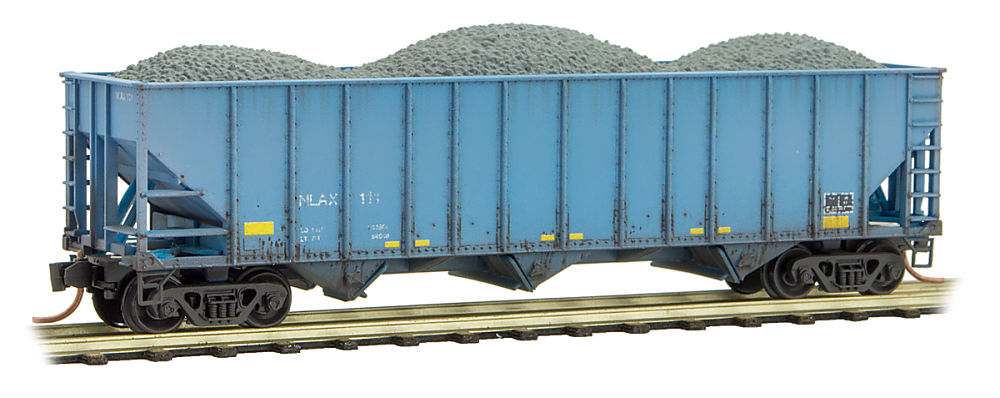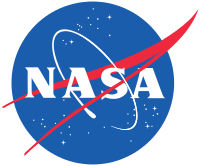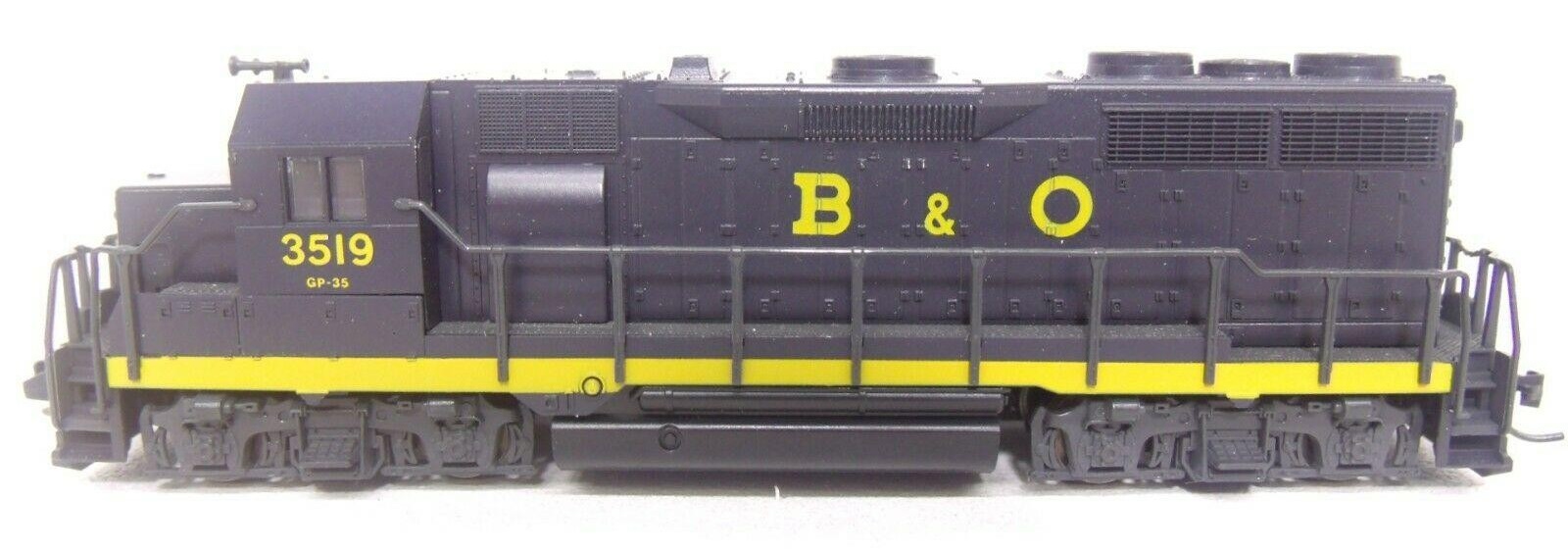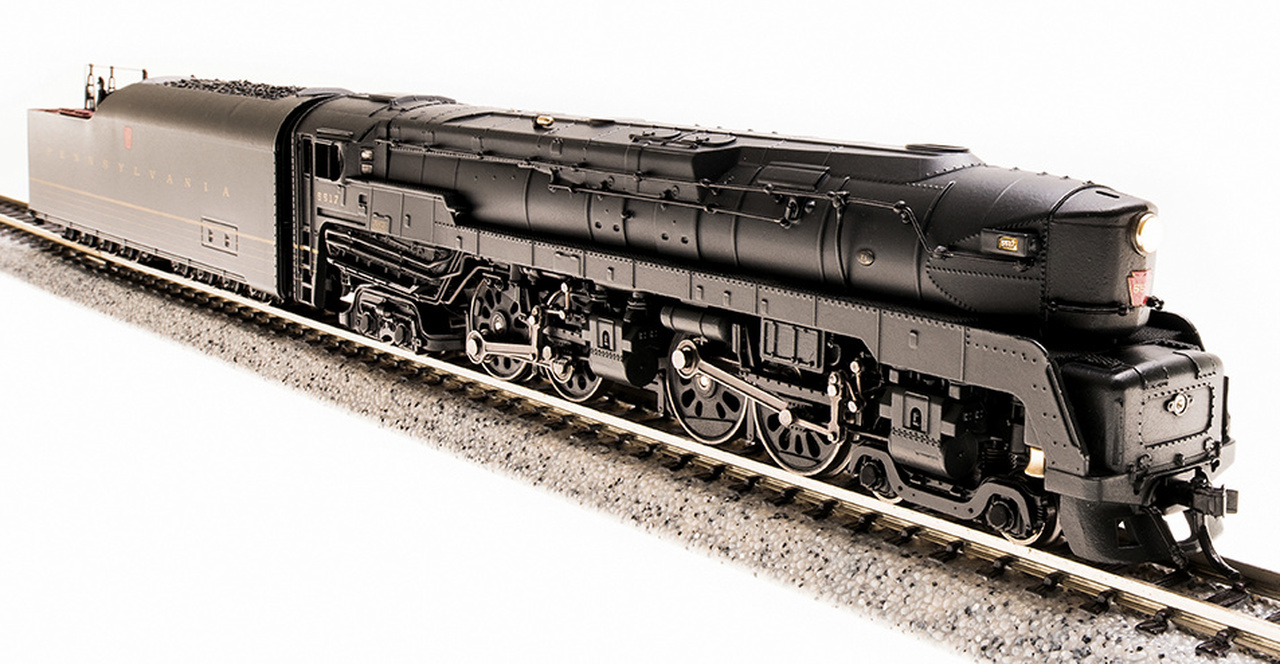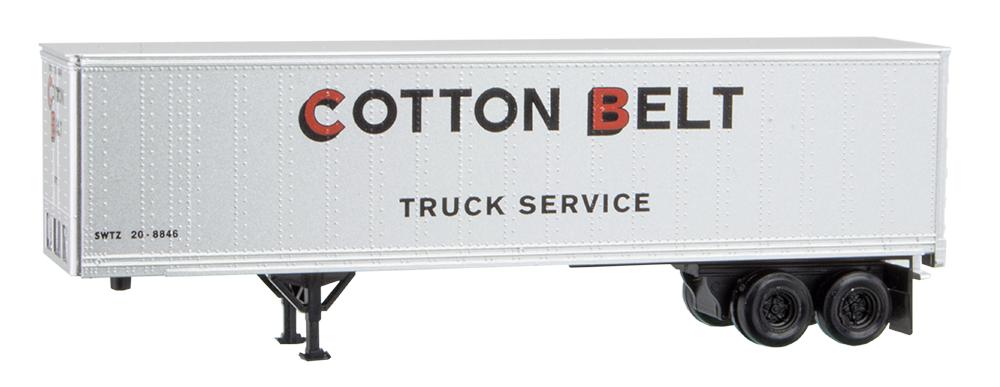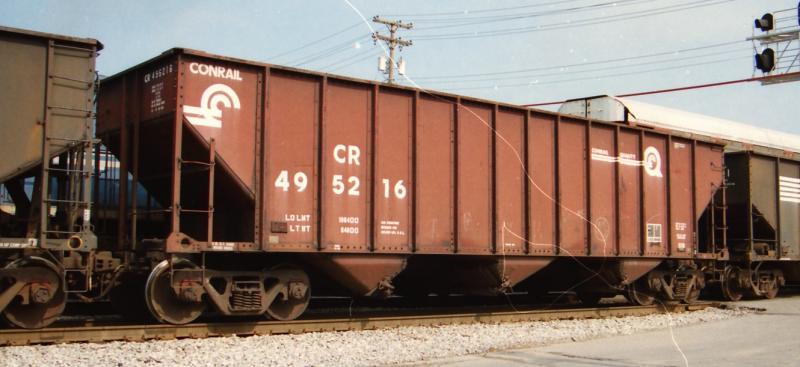Micro-Trains - 108 00 340 - Open Hopper, 3-Bay, 100 Ton - NASA - 111
| Stock Number | 108 00 340 |
| Secondary Stock Number | 108 00 340 |
| Original Retail Price | $28.95 |
| Brand | Micro-Trains |
| Manufacturer | Micro-Trains Line |
| Body Style | Micro-Trains 108 Hopper Open 3-Bay Ribbed Side 100 Ton |
| Prototype Vehicle | Open Hopper, 3-Bay, 100 Ton (Details) |
| Road or Company Name | NASA (Details) |
| Reporting Marks | NLAX |
| Road or Reporting Number | 111 |
| Paint Color(s) | Blue |
| Print Color(s) | White |
| Coupler Type | MT Magne-Matic Knuckle |
| Wheel Type | Injection Molded Plastic |
| Wheel Profile | Standard |
| Series Name | NASA |
| Series Release/Issue Number | 10 |
| Release Date | 2017-06-01 |
| Item Category | Rolling Stock (Freight) |
| Model Type | Open Hopper |
| Model Subtype | 3-Bay |
| Model Variety | Ribbed Side 100 Ton |
| Prototype Region | North America |
| Prototype Era | NA Era IV: 2nd Gen Diesel (1958 - 1978) |
| Scale | 1/160 |
Specific Item Information:
This 100-ton 3-bay open hopper with rib sides and coal load is blue with white lettering and runs on Barber Roller Bearing trucks. Built in 1979, this ex. Chicago, Rock Island & Pacific hopper was purchased by NASA in 1984, and was used to haul ballast and other aggregate materials for maintenance purposes along the Kennedy Space Center railroad right-of-way.
Model Information:
Micro-Trains launched this body style in April of 2000. Since then it has appeared in over 100 different regular releases (including multi-packs) as well as special runs. It features truck-mount couplers on barber trucks. These cars model prototypes that were built in in the late 1970s and 1980s.
Prototype History:
The 1960s brought about a growth in car size (and capacity). Railroads that transported coal moved away from the older 2-bay 55-ton USRA standard to newer 90- and 100-ton three bay hoppers. On the WM, the first 90 ton cars were purchased for stone service to Sparrows Point around 1963. These cars were effective and long-lived. Many railroads swapped out the trucks on these cars to increase the capacity to 100 tons. Many companies produced these, including Pullman, Bethlehem, Evans, Greenville, Trinity and Ortner. Details, of course, vary from manufacturer to manufacturer, but typically they were rib-sided. As of 2007, the NS still had lots of 90 ton hoppers in coal service.
Road Name History:
The National Aeronautics and Space Administration (NASA) is an independent agency of the executive branch of the United States federal government responsible for the civilian space program as well as aeronautics and aerospace research.
President Dwight D. Eisenhower established NASA in 1958 with a distinctly civilian (rather than military) orientation encouraging peaceful applications in space science. The National Aeronautics and Space Act was passed on July 29, 1958, disestablishing NASA's predecessor, the National Advisory Committee for Aeronautics (NACA). The new agency became operational on October 1, 1958.
Since that time, most US space exploration efforts have been led by NASA, including the Apollo moon-landing missions, the Skylab space station, and later the Space Shuttle. Currently, NASA is supporting the International Space Station and is overseeing the development of the Orion Multi-Purpose Crew Vehicle, the Space Launch System and Commercial Crew vehicles. The agency is also responsible for the Launch Services Program (LSP) which provides oversight of launch operations and countdown management for unmanned NASA launches.
From Wikipedia
The NASA Railroad operates 38 miles of track connecting the Kennedy Space Center at Cape Canaveral, Florida to a connection with the Florida East Coast Railroad. Traffic includes fuel, rocket components and other equipment switched in recent years with a trio of ex-TP&W SW1500’s. Traffic fell off considerably with the cancellation of the Space Shuttle program in 2011. NASA’s fleet of liquid helium and liquid oxygen tank cars were loaned to SpaceX in Texas and California. The railroad was inactive between 2013 and 2020 but limited service has resumed as private space launch companies have begun to use the Kennedy Space Center again.
President Dwight D. Eisenhower established NASA in 1958 with a distinctly civilian (rather than military) orientation encouraging peaceful applications in space science. The National Aeronautics and Space Act was passed on July 29, 1958, disestablishing NASA's predecessor, the National Advisory Committee for Aeronautics (NACA). The new agency became operational on October 1, 1958.
Since that time, most US space exploration efforts have been led by NASA, including the Apollo moon-landing missions, the Skylab space station, and later the Space Shuttle. Currently, NASA is supporting the International Space Station and is overseeing the development of the Orion Multi-Purpose Crew Vehicle, the Space Launch System and Commercial Crew vehicles. The agency is also responsible for the Launch Services Program (LSP) which provides oversight of launch operations and countdown management for unmanned NASA launches.
From Wikipedia
The NASA Railroad operates 38 miles of track connecting the Kennedy Space Center at Cape Canaveral, Florida to a connection with the Florida East Coast Railroad. Traffic includes fuel, rocket components and other equipment switched in recent years with a trio of ex-TP&W SW1500’s. Traffic fell off considerably with the cancellation of the Space Shuttle program in 2011. NASA’s fleet of liquid helium and liquid oxygen tank cars were loaned to SpaceX in Texas and California. The railroad was inactive between 2013 and 2020 but limited service has resumed as private space launch companies have begun to use the Kennedy Space Center again.
Brand/Importer Information:
Micro-Trains is the brand name used by both Kadee Quality Products and Micro-Trains Line. For a history of the relationship between the brand and the two companies, please consult our Micro-Trains Collector's Guide.
Manufacturer Information:
 Micro-Trains Line split off from Kadee Quality Products in 1990. Kadee Quality Products originally got involved in N-Scale by producing a scaled-down version of their successful HO Magne-Matic knuckle coupler system. This coupler was superior to the ubiquitous 'Rapido' style coupler due to two primary factors: superior realistic appearance and the ability to automatically uncouple when stopped over a magnet embedded in a section of track. The success of these couplers in N-Scale quickly translated to the production of trucks, wheels and in 1972 a release of ready-to-run box cars.
Micro-Trains Line split off from Kadee Quality Products in 1990. Kadee Quality Products originally got involved in N-Scale by producing a scaled-down version of their successful HO Magne-Matic knuckle coupler system. This coupler was superior to the ubiquitous 'Rapido' style coupler due to two primary factors: superior realistic appearance and the ability to automatically uncouple when stopped over a magnet embedded in a section of track. The success of these couplers in N-Scale quickly translated to the production of trucks, wheels and in 1972 a release of ready-to-run box cars.
Micro-Trains Line Co. split off from Kadee in 1990 to form a completely independent company. For this reason, products from this company can appear with labels from both enterprises. Due to the nature of production idiosyncrasies and various random factors, the rolling stock from Micro-Trains can have all sorts of interesting variations in both their packaging as well as the products themselves. When acquiring an MTL product it is very important to understand these important production variations that can greatly enhance (or decrease) the value of your purchase.
Please consult our Micro-Trains Collector's Guide

Micro-Trains Line Co. split off from Kadee in 1990 to form a completely independent company. For this reason, products from this company can appear with labels from both enterprises. Due to the nature of production idiosyncrasies and various random factors, the rolling stock from Micro-Trains can have all sorts of interesting variations in both their packaging as well as the products themselves. When acquiring an MTL product it is very important to understand these important production variations that can greatly enhance (or decrease) the value of your purchase.
Please consult our Micro-Trains Collector's Guide
Item created by: gdm
on 2017-06-01 10:11:45
Last edited by: George on 2024-01-26 20:29:05
If you see errors or missing data in this entry, please feel free to log in and edit it. Anyone with a Gmail account can log in instantly.
Last edited by: George on 2024-01-26 20:29:05
If you see errors or missing data in this entry, please feel free to log in and edit it. Anyone with a Gmail account can log in instantly.


